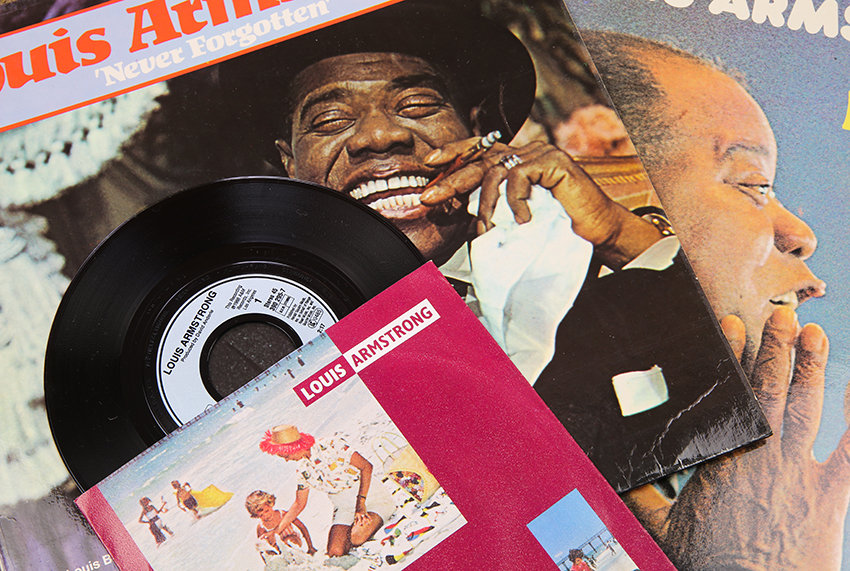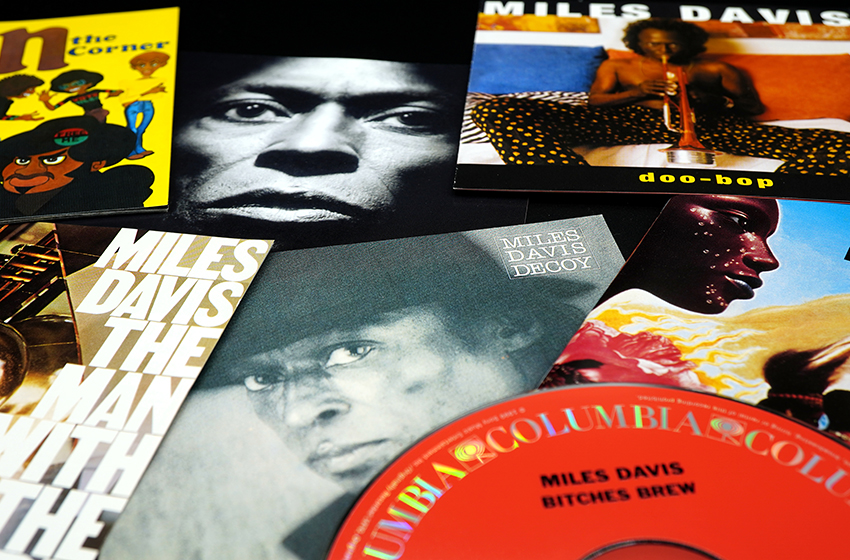While jazz still continues to develop today, it appears hard to visualize any other year, past, existing, or future generating a lot of divergent new styles at once. From the reflective, modal musings of Miles Davis on Kind of Blue, to the intense, ruthless look for new consistencies and also sonorities from John Coltrane on Giant Steps, a riches of very diverse songs was being imagined, developed, and also tape-recorded by several various jazz musicians in 1959. This checklist of tracks deals yet a small taste of the acoustic prizes that attracted, relieved, excited, shocked (and even outraged some) listeners in the post-Oriental War-era USA. Along with revealing such a diverse range of jazz styles, the music reviewed right here supplies (at the very least to this writer’s ears) a set of tunes that ranges greatly in mood, tempo, as well as feeling. From the amazing swing of Dave Brubeck (in 5/4 time, no much less), to the melancholy, gut-wrenching, blues-drenched homage to a former tenor saxophone titan by Charles Mingus, to the frenetic, breathtaking collective initiatives of Ornette Coleman’s quartet, pressing the boundaries of jazz in every means, and also presenting a style called “complimentary jazz” that has actually been the subject of dynamic conversations for years (which still continue), relating to specifically what jazz is and also isn’t.
1. So What (Miles Davis) 9:22 – from Miles Davis, Type Of Blue (Columbia).
We start with a track from, probably, the best jazz record of all time. Miles Davis’ Sort of Blue introduces audio that remains in direct comparison to much of the hard, aggressive bop that was prominent at the time. Undoubtedly, several of the “tough bop” college’s most popular professionals are on this Davis day, but below the emphasis is on a totally various visual. Davis had started to wander off far from the bop practices, that he had actually assisted to innovate on sessions with Charlie Parker in the mid-1940s, most notably on a series of sessions for the Eminence label. These sessions, Cookin’ with the Miles Davis Quintet, Relaxin’ with the Miles Davis Quintet, Workin’ with the Miles Davis Quintet, as well as Steamin’ with the Miles Davis Quintet show a Davis that is considering turning even more inward in his technique, as well as developing solos that have actually an even more controlled and also unwinded feeling than much of his difficult bop contemporaries. The partnerships with Gil Evans, starting in 1957, similarly highlight a Davis noise that is started, touching, vulnerable and also decidedly romantic, in sessions such as Miles Ahead with Columbia (after his contract with Prestige had ended). In-Kind of Blue, Davis, for the first time, started to try out a strategy that highlighted a modal based improvisation, rather than the practical bop consistencies that were ubiquitous in the jazz globe at the time. These modal harmonies, in which often a single chord would certainly support the tune for numerous bars, were a perfect fit with Miles’ idea of downplayed, as well as nearly minimalist improvisations. This is evident in our opening track, “So What,” right from the beginning. An easily played piano/bass introduction, by Chambers and also Evans, including modal based harmonies, leads into a Paul Chambers riff that is responded to by Davis, Coltrane, and also Adderley, and Evans with a simple 2 note rhythmic number. The tune harmonically is based on only 2 modes, or chords, for the entire track! Dazzling soloing by an additional leader trying to find his own musical identity (and finding it), John Coltrane, and an alto saxophonist mainly identified with the hard bop motion, Julian “Cannonball” Adderley, 2 master saxophonists with just as imaginative approaches to Davis’ product. Yet it is Davis’ solo, that establishes the tone, not just for this opening track of Sort of Blue, yet indeed for the entire cd. A mature, very positive, deliberately scheduled and wonderfully paced solo that offers extremely various techniques to not only the trumpet, yet on any kind of instrument. One that favours economic climate over excess, supplying a musical parallel to the expression “much less is much more”.
2. Take Five (Paul Desmond) 5:24 – from Dave Brubeck Quartet, Time Out (Columbia).
Proceeding with a method that provides an “amazing” idea (instead of the fiery, and hostile bop as well as difficult bop) is our second cut. Dave Brubeck, being motivated from journeys to Turkey, Greece, and the Center East, wanted to tape an entire album of songs that discovered various measure signatures than the basic 4/4 and 3/4 time that recognized most American music, and particularly jazz and music. What resulted was the album Time Out, which went on to become one of the top marketing jazz albums of all time (3rd just to Davis’ Kind of Blue, and also Coltrane’s A Love Supreme). We provide below the most renowned track from that album: “Take Five”. The title is, obviously, an used word, offering us an idea right into the time signature of the tune, which remains in 5/4 time. A turning groove begins the track from drummer Morello, joined by Brubeck on piano, and finally bassist Wright. Desmond states the melody as well as embarks on a swinging solo, over the A “area” of the tune, (which is basically the opening vamp) followed by a warmed drum solo from Morello, and after that Desmond returns us to the head of the song, closing on a duplicated vamp that opened the track. A personal anecdote/story from Brubeck (from Ken Burns movie: Jazz) loses light into the compositional/arranging procedure of this song. Paul Desmond, Brubeck’s alto saxophonist, had composed the tune and brought it in for practice session. The track remained in ABA type, and when he heard it, Brubeck recommended that Desmond switch the “A” as well as “B” sections, as initially, Desmond had the tune beginning with what we now referred to as the bridge or “B” section. Brubeck’s impulses concerning this show up to have been “on the money” as the tune consequently turned into one of the most cherished jazz criteria of all time!
3. Gigantic Steps (John Coltrane) 4:43 – John Coltrane, Titan Steps (Atlantic).
The next cut also became a jazz requirement, yet of an entirely various kind. From John Coltrane’s landmark cd Giant Actions, this is the title track. Once again, as was the case with “Take Five”, the title is somewhat of a play on words. Coltrane had begun experimenting with finding brand-new ways to approach harmonic progression, even as a sideman, replacing chords in his improvisations over conventional tunes. He found a new way to approach harmonic progression, by using the interval of a small third, combined with the activity of the 5th, right into a sequence that for life changed jazz harmony, and has actually been usually taken into consideration the “criteria” through which jazz artists today are judged. The title,” Huge Steps”, numerous have written, can refer to these unconventional chord modifications (the period of the small third, which include 3 1/2 actions, being a “giant action”, as a normal “step” in music terms, is a major 2nd, consisting of 2 1/2 steps) Along with this advanced concept of harmonic progression is an absolutely blisteringly rapid pace, which makes the harmonic progression even more of a challenge for the musicians on the day (except for Coltrane, naturally, who had actually been living, and also taking a breath these certain chord adjustments). Certainly, on this day, the pianist Tommy Flanagan shows up sometimes to just quit throughout his solo, as well as that can blame him, actually? Coltrane was known for bringing brand-new, unrehearsed products commonly to taping sessions, and also in this instance- his new ideas of harmonic progression are not conveniently grasped” instantly”, also by musicians as brilliant as Flanagan! In any case, the track remains a famous tune that has actually befuddled and inspired many a jazz student. Coltrane’s solo below exemplifies his forward-thinking strategy, as he seemingly flies via the chord changes effortlessly, arpeggiating them, as well as using a solo that has become researched as well as a model of contemporary tone saxophone playing that is wondered by musicians, fans, and also jazz enthusiasts anywhere.
4. Farewell Pork Pie Hat (Charles Mingus) 5:44 – Charles Mingus, Mingus Ah (Columbia).
Adhering To Giant Steps is yet another cherished jazz standard, this time around originating from bassist/composer Charles Mingus. Mingus had actually been at the forefront of innovation in jazz for some time, having played with bop pioneers Charlie Parker, Dizzy Gillespie, Bud Powell, and Max Cockroach during the very early 1950s, and had established himself as one of the premier bassists in jazz. Mingus had, by the mid-50s, also developed an ensemble that was, in dimension, in between a big band and a typical combination- usually 8-10 pieces. Referred to as “Allure Workshop”, Mingus wrote numerous pieces for various permutations of this set. The music was not bopped, per se, yet additionally didn’t fit nicely right into other categories that were concurrent (” cool jazz”, “modal jazz”, “hard bop”). Mingus’ songs were noticeably original in the idea as well as form. Like Ellington, Mingus understood his artists well, and also such as to compose for particular music individualities in the group, as well as also motivated them to improvisate parts of his songs instantly, with each other- taking a virtually collective strategy to improvisation that resembled the strategy Ornette Coleman had actually been servicing. In 1959, after having tape-recorded lots of CDs as a leader, Mingus taped his most popular cd, Mingus Ah which included the musicians from his “jazz workshop”, consisting of saxophonists John Handy, Booker Ervin, pianist Horace Parlan, and drummer Dannie Richmond. The track we chose for this album, “Goodbye Pork Pie Hat” was created as a tribute to the wonderful tenor saxophonist- Lester Young, who had passed earlier in the year. It is just one of Mingus’ most well-known tunes, and also is an emotional ballad that features an unusual cutting edge horn combination of 3 tone saxophones, (Useful, Ervin, and also Shafi Hadi) that play the melody mostly in unison (sometimes integrated briefly). Its blues-drenched melody, as well as sorrowful feeling, are strongly striking. John Handy plays a mournful solo, in which, at one factor employs a flutter-tongue noise, which is resembled by Mingus on bass – mimicking Handy’s result. Useful’s solo is a highlight, although the total haunting noise and also the ambience of this track is just amazing.
5. Lonesome Lady (Ornette Coleman) 5:02 – Ornette Coleman, The Shape of Jazz to find, (Atlantic).
Somewhat similar in direction and also principle to Mingus, was the course alto saxophonist Ornette Coleman as well as his associates were embarking on, although Coleman’s technique was much more radical, extreme, and also innovative probably than Mingus’. Coleman wanted collective strategies to improvisation, as was Mingus, but in a far more liberated manner. Coleman declined the conventional technique of improvisating over a set of chord modifications, declined also improvisating over a constant tempo at times, and rejected even having a pre-set type in which improvise over (or having a “vital” in all!). The album, The Shape of Jazz to find, is a very early example of Coleman’s radical brand-new principle, which came to be called “totally free jazz”. Coleman’s collaborators in the cd consist of cornetist Don Cherry, bassist Charlie Haden, as well as drummer, Billy Higgins. The music from this cd triggered a discussion, and debate that still rages on, even today, regarding what jazz is. Contrasted to a lot of “free jazz” that complied with in later years, the music from this record could be taken into consideration fairly conservative! In “Lonesome Female”, there is, essentially, a stable pace being provided from drummer Higgins (a rather fast one), and there is a tune that is mentioned at the beginning and end of the performance, which had been a basic practice in jazz for years by this factor. The tune itself, specified by Coleman and also Cherry, is a bluesy declaration that drifts rather easily over an unbalanced beat from Higgins, while Haden offers abasing double-stopped pedal point, repeated throughout much of it. Coleman’s complying with solo attracts greatly on blues melodic language, while Haden holds back the pedal factor. This is followed by an additional declaration of the melody from Cherry as well as Coleman, as well as Higgins as well as Haden close the track, vamping on the opening product. The raw, and also extreme noise of Coleman’s quartet in these recordings really reveals “The form of jazz ahead” for many.



